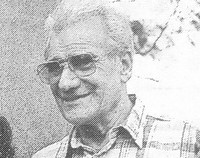By Wendy Walker-Birckhead
This ethnographic study by Wendy Walker-Birckhead focuses on the migration experiences of Dutch women to Australia during the post-World War II period. Drawing on 48 case studies, it explores how migration has been understood and lived differently by Dutch men and women. While male narratives often frame migration as a rational, adventurous endeavour, women’s stories emphasise themes of home, homesickness, emotional rupture, and the challenge of building a new domestic and cultural identity in Australia. The paper reframes family migration not merely as male-led economic relocation but as a complex gendered process in which women played a pivotal but often invisible role.
Migration Policy and Gendered Context
Dutch postwar migration to Australia was largely structured as family migration, supported by both Dutch and Australian governments. Men were seen as economic migrants and workers, while women—especially in Catholic communities—were expected to follow and stabilise family units through homemaking. Dutch policy was overtly assimilationist, favouring migration that would not lead to return, and encouraged female migration not for autonomy, but to support men’s settlement and to rear children who would become part of Australia’s future.
The Catholic Church played a central role in promoting this model, idealising women as dutiful wives and mothers who would extend the Church’s reach into the new land. Yet these women were largely invisible in migration literature and policy documentation, labelled as “dependents” and only emerging in records when return migration occurred.
The Decision to Migrate
The decision to migrate was typically initiated by men—husbands or fathers—often for economic or personal reasons, such as restlessness or a desire for independence. Women “followed,” but with significant emotional cost. Their accounts are marked by homesickness, attachment to their families (especially mothers), and cultural rituals such as daily coffee visits. The departure involved deep personal rupture, and in many cases, women had to reconcile conflicting loyalties between husband and birth family. For some, emigration offered escape from family obligations or overcrowded housing; for others, it was a sacrifice for their husband’s ambitions.
Arrival and Early Settling
Upon arrival, Dutch women were confronted with dislocation, substandard accommodation in migrant camps, and food and hygiene standards that violated their cultural norms. Migrant camps were often described as chaotic, muddy, and culturally alien, lacking the order and cleanliness associated with Dutch domestic life. Women had to cope with these losses while preserving family dignity and providing continuity for children. This period reinforced their role as cultural custodians in the private sphere, as their husbands began work and assimilated more quickly through the public sphere.
Building a Dutch Home in Australia
The creation of a “Dutch” home in Australia was women’s primary coping mechanism and a powerful form of cultural reproduction. Dutch homes were gezellig—cosy, warm, and inviting. This home culture was distinct from the sparse, utilitarian, and impersonal Australian domestic settings, which Dutch women often viewed as “bare,” unwelcoming, and socially sterile. Their homes became symbolic reconstructions of lost security and identity.
These homes were decorated with lace curtains, miniature ornaments, clocks, copperware, and family photographs. They became spaces of cultural resistance, affirmation, and healing. Women recreated Dutch domestic rituals—afternoon coffee, baking, hospitality—as a way to retain continuity and pride. For many, importing furnishings or food items from the Netherlands symbolised not just material comfort, but the successful reassertion of self and heritage.
Food and Gendered Adaptation
Dutch cuisine, particularly vegetable-based meals, was a central expression of cultural identity. Women adapted by planting home gardens with imported seeds and learning to bake goods they had never previously needed to make, given the accessibility of bakeries in the Netherlands. Their rejection of Australian food—especially low-quality meats, canned goods, and sugary cakes—was both a practical and symbolic act of distinction.
The Homesick Husband: A Reversal
A compelling case history shows how even the supposed adventurer—the husband—could succumb to homesickness later in life, following a visit back to the Netherlands. Having initially seen migration as a professional opportunity, this man came to question the entire move, experiencing an emotional collapse that surprised his wife. She, meanwhile, had internalised her supportive role, expressing happiness wherever he was, even while acknowledging the depth of her own sacrifices. This story challenges the stereotype that only women experience homesickness and shows how men, too, may encounter belated emotional reckoning.
Summary and Analysis
Walker-Birckhead argues that men and women inhabit different “models” of migration. For men, migration was about movement and ambition; for women, it was about maintaining continuity, nurturing identity, and managing loss. Women were the moral centres of migrant families—holding together emotional and cultural life while remaining largely confined to the domestic sphere. This confinement, however, was not passive. Through home-making, cultural rituals, and quiet resilience, these women created spaces that preserved identity and shaped family life for decades.
The chapter concludes that migration, far from liberating these women, often entrenched them further within gendered expectations. Yet within these constraints, they found ways to exercise cultural agency. The Dutch home in Australia—cosy, welcoming, and richly symbolic—was not merely a refuge from displacement but a profound statement of belonging.
Biography: Wendy Walker-Birckhead
Dr Wendy Walker-Birckhead is an anthropologist and sociologist specialising in migrant identities, gendered migration, and ageing in multicultural Australia. She completed her PhD at the Australian National University, where she conducted extensive fieldwork among Dutch postwar migrants. Her work focuses on the intersection of culture, identity, family, and health, especially as experienced by women and older migrants.
Walker-Birckhead has published influential studies on Dutch assimilation, women’s migration narratives, and health in old age. Her writing combines rigorous ethnographic methods with rich narrative detail and feminist analysis. She has been especially notable for giving voice to those typically excluded from migration narratives—women, the elderly, and the “assimilated invisible”—highlighting their everyday strategies of resilience, resistance, and cultural expression.
Her work challenges dominant assumptions in migration research by foregrounding emotion, domesticity, and cultural meaning, offering new insights into what it means to migrate, to belong, and to age in a foreign land.


